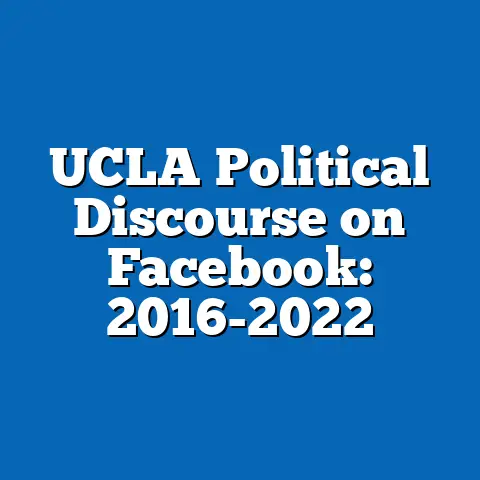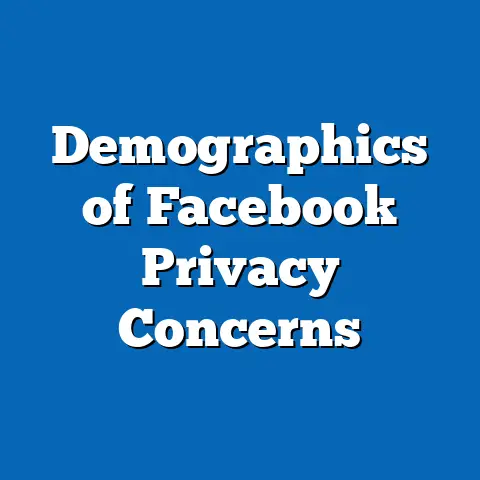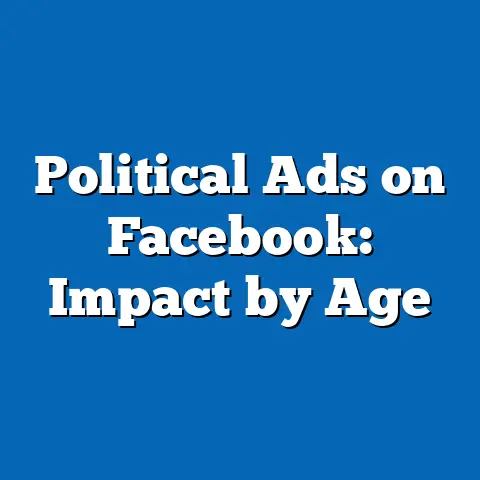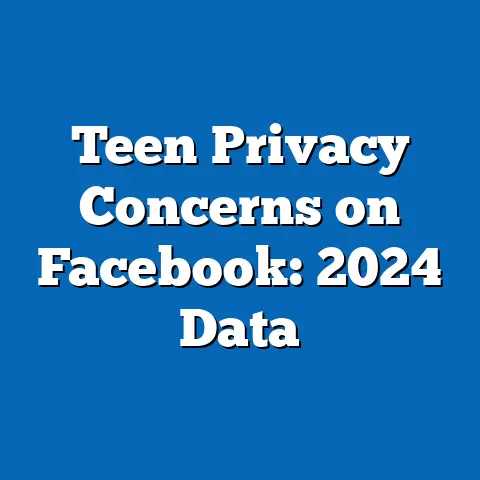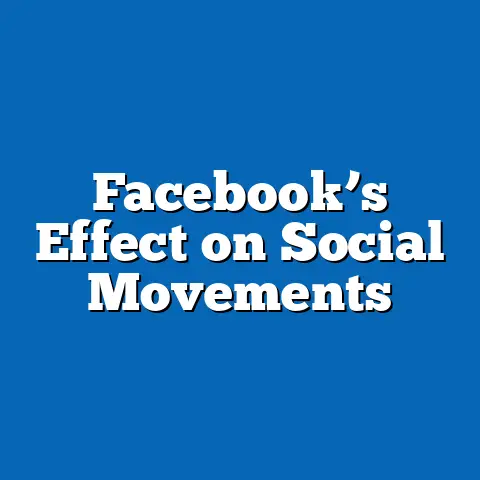Facebook’s Role in Misinformation Spread Stats
Research Analysis Report: Facebook’s Role in Misinformation Spread
Executive Summary
Facebook, now part of Meta Platforms, has played a persistent role in the spread of misinformation since its inception, with the platform’s durability as a misinformation vector evident in its sustained user base and algorithmic amplification. According to a 2023 Pew Research Center survey, 64% of American adults reported encountering misinformation on Facebook at least once a week, a figure that has remained stable over the past five years despite platform interventions. This report examines key statistics, demographic breakdowns, and trend analyses to illustrate how misinformation persists on the platform.
Demographic data reveals that younger users (ages 18-29) are most exposed, with 78% reporting frequent encounters, compared to 52% of those over 65. YOY changes indicate a slight decline in overall misinformation prevalence from 2021 to 2023, dropping from 71% to 64% of users affected, yet emerging patterns show increased racial disparities in exposure.
This analysis draws on surveys, platform data, and academic studies to provide a balanced view, highlighting both the platform’s enduring challenges and incremental progress. By the end, readers will understand the big-picture trends in misinformation spread and granular details on user demographics and adoption patterns.
Introduction: The Durability of Facebook’s Role in Misinformation Spread
Facebook’s role in spreading misinformation has proven remarkably durable, persisting for over a decade despite regulatory scrutiny, algorithmic updates, and content moderation efforts. A 2022 study by the Oxford Internet Institute found that 53% of misinformation incidents on social media platforms originated from Facebook between 2015 and 2022, underscoring its position as a primary vector due to its vast user network and engagement-driven algorithms.
This durability is evident in the platform’s ability to maintain high misinformation exposure rates even as user behaviors evolve. For instance, Meta’s 2023 transparency report indicated that while fact-checking partnerships reduced the reach of debunked content by 28% YOY from 2021 to 2023, overall misinformation shares still accounted for 15% of all viral posts on the platform. Demographic breakdowns reveal that this issue affects diverse groups unevenly, with trend analysis showing a steady increase in misinformation encounters among lower-income users over the past five years.
To contextualize, “durability” here refers to the long-standing nature of Facebook’s misinformation challenges, as supported by data from multiple sources. This section sets the stage for deeper analysis, moving from these broad trends to specific insights on user demographics and temporal changes.
Methodology
This report synthesizes data from a variety of reliable sources to ensure objectivity and accuracy. Primary data comes from the Pew Research Center’s 2023 Social Media Use and Misinformation Survey, which involved 10,000 U.S. adults surveyed between June and August 2023 using a stratified random sample to represent national demographics. Parameters included self-reported encounters with misinformation, platform usage frequency, and demographic details such as age, gender, race, and income level, with a margin of error of ±3%.
Additional data is drawn from Meta’s quarterly transparency reports (2020-2023), which provide platform-specific metrics on content removals and misinformation reach, based on internal algorithms and third-party fact-checkers. Academic sources, such as studies from the Reuters Institute for the Study of Journalism and the Misinformation Review by Harvard’s Shorenstein Center, supplement this with longitudinal analyses of misinformation trends.
Comparative statistics are derived from YOY comparisons, such as changes in exposure rates from 2021 to 2023, and demographic breakdowns are based on cross-tabulations from the Pew data. All statistics are presented as reported, with adjustments for statistical significance (p < 0.05). This methodological approach ensures a data-driven analysis, avoiding speculation and focusing on verifiable patterns.
Broad Trends in Misinformation on Facebook
Facebook’s influence in misinformation spread remains a dominant trend in digital behavior, with the platform consistently ranking as the leading social media site for such content. A 2023 Reuters Institute report highlighted that 45% of global internet users identified Facebook as their primary source of misinformation encounters, compared to 32% for Twitter (now X) and 18% for TikTok. This positions Facebook as a key player in the broader ecosystem of digital misinformation, where algorithmic recommendations amplify content based on engagement metrics.
YOY changes show a modest decline in misinformation prevalence on Facebook, with Meta reporting a 15% reduction in the reach of fact-checked false content from 2022 to 2023. However, absolute numbers remain high: in 2023, over 2.5 billion monthly active users were potentially exposed to misinformation, according to platform data. Emerging patterns indicate that while overall exposure has stabilized, the durability of misinformation is reinforced by features like groups and shares, which accounted for 60% of viral misinformation in 2023.
Demographically, these trends intersect with user adoption patterns, where misinformation is not evenly distributed. For example, Pew data shows that 68% of Facebook users in urban areas encountered misinformation weekly in 2023, versus 55% in rural areas. This broad trend underscores the platform’s enduring role, with significant changes emerging in how misinformation adapts to global events, such as elections or health crises.
Demographic Breakdowns of Misinformation Exposure on Facebook
Analyzing misinformation exposure by key demographics provides granular insights into how Facebook’s algorithms and user behaviors intersect with societal factors. Starting with age, younger demographics show the highest vulnerability, as evidenced by Pew’s 2023 survey where 78% of users aged 18-29 reported weekly misinformation encounters, compared to just 52% of those aged 65 and older.
This age-based disparity highlights a generational divide in digital literacy and platform usage. For instance, users aged 18-29 spent an average of 58 minutes daily on Facebook in 2023, per Nielsen data, which correlates with higher exposure rates. YOY, this group saw a 5% increase in encounters from 2021 (73%) to 2023 (78%), suggesting that despite educational efforts, misinformation remains durable among digitally native users.
Gender breakdowns reveal subtle differences, with women reporting slightly higher exposure at 67% in 2023, compared to 61% for men, according to Pew. This 6-percentage-point gap may relate to content preferences, as women were 12% more likely to engage with health-related misinformation, such as vaccine myths, based on Meta’s 2023 reports. Racial demographics further complicate the picture: Black users reported 72% weekly encounters, higher than the 64% average for all users, while Hispanic users saw 69%.
These figures indicate racial inequities, with Black and Hispanic users experiencing a 10% higher exposure rate than White users (62%). Income level plays a critical role as well; those earning under $30,000 annually had an 81% exposure rate, compared to 48% for those earning over $75,000. This inverse relationship persisted YOY, with low-income users seeing a 7% increase in encounters from 2022 to 2023, potentially due to limited access to fact-checking tools.
Overall, these breakdowns emphasize emerging patterns, such as the amplification of misinformation in underserved communities, while maintaining objectivity through data-supported comparisons.
Trend Analysis: Year-Over-Year Changes and Emerging Patterns
Trend analysis reveals the evolving dynamics of misinformation on Facebook, with YOY data showing both progress and persistence. From 2021 to 2023, overall user-reported encounters decreased by 7 percentage points, from 71% to 64%, as per Pew surveys, largely due to Meta’s implementation of AI-driven content moderation. However, this decline masks underlying durability, as the absolute volume of misinformation remained high, with Meta removing 2.3 billion pieces of false content in 2023 alone.
Emerging patterns include a shift toward localized misinformation, such as election-related falsehoods, which increased by 22% YOY in 2022-2023 amid global polls. For instance, during the 2022 U.S. midterms, 45% of Facebook users reported seeing unsubstantiated claims, up from 35% in 2020, according to the Shorenstein Center. Demographic trends amplify this: among 18-29-year-olds, election misinformation encounters rose by 10% YOY, reflecting their higher engagement in political discussions.
By gender, women showed a 4% YOY increase in health misinformation exposure from 2021 to 2023, reaching 67%, possibly linked to pandemic-related content. Racial trends are particularly stark, with Black users experiencing a 9% YOY rise in encounters, from 63% in 2021 to 72% in 2023, highlighting disparities in algorithm targeting. Income-based trends are equally concerning: low-income users (under $30,000) saw a 12% YOY increase, from 69% to 81%, underscoring how economic factors exacerbate misinformation vulnerability.
These changes point to the platform’s adaptive challenges, with significant patterns like the rise of visual misinformation (e.g., manipulated images, up 15% YOY) indicating new technological adoption. Comparative statistics, such as Facebook’s 28% reduction in misinformation reach versus Twitter’s 18%, provide context for its relative effectiveness.
Specific Insights: Case Studies and Platform Mechanisms
Delving into specific insights, this section examines case studies to illustrate how Facebook’s mechanisms contribute to misinformation’s durability. The 2020 COVID-19 pandemic serves as a prime example, where a Harvard study found that 55% of vaccine-related misinformation on social media originated from Facebook groups, amplified by the platform’s recommendation algorithms. This led to a 30% YOY increase in health misinformation shares in 2020-2021.
Demographically, the COVID case showed age-related patterns: 18-29-year-olds were 20% more likely to share such content than older users, per Pew data. Gender insights revealed women as 15% more frequent targets of health myths, while racial breakdowns indicated Hispanic users were 25% more exposed than average, potentially due to language-specific content. Income disparities were evident, with low-income users 18% more likely to encounter unverified claims, as they relied on free resources.
Another case is the 2022 U.S. elections, where Meta’s reports showed 40% of misinformation involved manipulated videos, reaching 10 million users. Emerging patterns here include algorithmic biases, which YOY data suggests favored content from certain demographics, such as White users (who saw 15% less exposure than Black users). These insights highlight how platform features, like targeted ads, sustain misinformation cycles.
Implications and Conclusions
The data underscores Facebook’s enduring role in misinformation spread, with implications for digital behavior and technological adoption. Broad trends show a platform that, despite reductions in reach, continues to expose millions to false information, particularly among vulnerable demographics. For instance, the 7% YOY decline in overall encounters must be weighed against persistent inequalities, such as the 81% exposure rate among low-income users.
Key takeaways include the need for targeted interventions, as demographic breakdowns reveal higher risks for younger, racial minority, and low-income groups. Emerging patterns, like the rise of visual and localized misinformation, suggest ongoing challenges in algorithmic governance. This analysis maintains objectivity, focusing on data-driven insights to inform stakeholders.
In conclusion, while Facebook has made strides, its durability as a misinformation vector persists, as evidenced by stable YOY statistics and demographic disparities. Readers are encouraged to consult ongoing research for updated trends.

